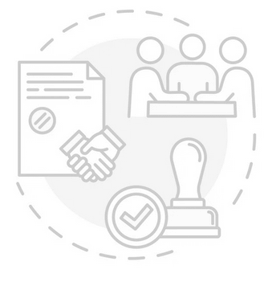BEST PRACTICES FOR THE reality of
MULTI-TOOL ANALYTICS Landscapes
practical advice from the trenches
Prepared by PMsquare
⏱️ Avg. Reading Time: 7 min
TABLE OF CONTENTS
Chapter 1. Know Thyself
Chapter 2. All About The Gains
Chapter 3. Don't Leave Them Hanging
Chapter 4. Take Out The Trash
Chapter 5. Inconspicuous Governance
Chapter 6. Curate & Illuminate
Chapter 7. One Stop Shop
Data analytics has revolutionized the way businesses operate, empowering them to make informed decisions and stay ahead in a rapidly changing market. The strategic use of data can unlock unparalleled growth opportunities for organizations.
Dr. Emily Johnson, Professor of Business Analytics at Stanford University
Like many organizations, you likely utilize a variety of analytics tools, repositories, and methods to equip decision makers with the critical information they need for informed business decisions. This diversity brings both complexity and significant capabilities. With such capabilities comes the crucial responsibility of effectively leveraging this extensive data to guide your organization's decisions.

ABSTRACT
This report, Best Practices for the Reality of Multi-Tool Analytics Landscapes by PMsquare, delves into the crucial role of data analytics presentation and best practices for shops with more than one presentation method or analytics vendor in place. The topic was chosen due to the increasing reliance on data-driven insights for strategic decision-making and with that, the need to better enable decision makers. Companies leveraging data analytics outperform their competitors by 20% in a recent study by Harvard Business School & MIT Sloan School of Management...but if decision makers cannot find or utilize the analytics they need, it's moot.
The best practices herein were developed through decades of experience by our analytics consultancy with many different clients and across many different industries. The transformative power of data analytics in maximizing operational efficiency and driving revenue growth in today's competitive business landscape only applies when your organization can effectively curate and present decision makers with key information. This report aims to help your organization consider how to best accommodate the many means and realities of ubiquitous analytics artifacts and how to best present atrophy. Our focus in this particular piece is specifically on multi-tool analytic environments, which is where most find themselves today, but are still falling short of "eureka"! Consider the approach below and utilize whichever pieces make sense to your organization. A better, smarter, easier unified analytics approach exists for both analytics creators and analytics consumers.
CHAPTER 1: KNOW THYSELF
Each organization is unique - be realistic about your organizational nature and your current analytics approach. Understand that each of your particular tools bring individual value to particular user bases in your organization
- You likely have various analytics tools in play for mostly legitimate reasons. There will be bleed over between them, but it's likely that each serves a meaningful, sometimes distinct purpose (or did at some point). Make sure that you understand the value that each tool adds for its distinct user base in your organization.
- Focus on differentiating features between the tools and understand why each base uses that particular tool. This helps guide your decisions around support, management, consolidation, and allocation of resources.
Automate the collection and presentation of usage and performance stats and use them to gauge the subjects listed below. Now, you could do this all through interviews, surveys, and conversations…but for active management, you should try to automate usage statistics via application logging. This, in part, serves as a good way of gauging a lot of different things:
Usage - each tool, who are the customer bases, stagnation, domains covered, etc.
Auditability – moves/adds/changes for internal and external audit use
Behaviors – seasonality, time of day, which content is most utilized, how does it perform
Issues – common recurring errors, hot spots (concurrency), slowdowns, performance over time, etc.
Adoption of features and content - this is really twofold…gauging not only which content is most used and by whom, but also which features (storytelling, dashboarding, cubing, API access, external charting, geospatial, etc.)
ROI by tool - bounce your determined usage and unique value per tool against your total cost of ownership to get to ROI
This is all done to help inform your decision around what is important, to whom, why, and how to best support each - ensuring understanding, gaining clarity and improving efficacy.

"To know thyself is the beginning of wisdom"
Socrates
Each organization is unique. Know your particular situation, capabilities, constraints, and needs. Build solutions considering your particular reality.
CHAPTER 2: ALL ABOUT THE GAINS
We're all trying to do more with less these days and with uncertain economic conditions, it behooves us do what we can to federate and democratize our analytic workloads. Avoid bottlenecks by distributing work, where practical, outside of a central BI/DW team. If you have only a central BI/DW group that does all of the analytic work and have very little self-service, you have a real bottleneck.
So, how do you better enable self-service?
- Up-skill your team and business partners accordingly -
- Coursera (so much good, free content germane to analytics, programming, data science, AI, and certification programs)
- Analytics degree post grad programs (10 month masters, etc.)
- TDWI and other boot camp learning opportunities
- Vendor based self-paced learning, user groups, communities, etc.
- Inspire through success stories, acclaim, and user groups
- Allow your users to be inspired by other players in your space - participate and encourage active participation in user groups and external organizations.
- Promote your analytics wins and those of others in your organization! Don’t forget the value that analytics brings to your organization - data is the modern day oil. When appropriate, aim to promote it on a grand scale, leveraging the capacity to impact nearly every organizational objective. It’s important…promote it like it is.
- Encourage ongoing participation through Centers of Excellence, data literacy programs, and tie to incentives/expectations.
- Enable self service via formal training, lunch and learns, video content, internal self-paced learning, good lineage, meaningful data catalogs, and encourage peer reviews to enable collaboration.

The more you do to enable your greater team of analytics consumers & creators, the better throughput your organization will have…giving you a better chance of deeper and broader insights.
CHAPTER 3: DON'T LEAVE THEM HANGING
You're the expert. Help users decide what tool or method is likely best for their current need - don't leave them guessing. You need a clear first step to get to the right data via the right analytics vehicle.
Consider using a decision tree or features/use-case matrix to help users (especially those who aren’t already ingratiated with the analytics team) easily determine the first step in accessing the necessary data. This, of course, can tie into governance programs and artifacts. In cases where self-service isn't feasible, link it to your work ingestion mechanism.
If net new needed, maybe it becomes a new customer story
New requests unable to be fulfilled by existing methods/tooling/data become new customer stories and the centralized analytics team becomes responsible for delivery.
Solidify your success by espousing the enablement methods previously mentioned in Chapter 2. Additionally, ensure that cataloging, inventorying, profiling of data is available and tool/API documentation is at the ready
- Expose what you’ve done cataloging, inventorying, and profiling your analytic data sources and semantic layers, so that your self-service customers have some idea of what to explore. If API use is an option, make sure users have access to, and can easily find documents or means of understanding methods and objects.
Go down to atomic level/details, where appropriate.
- Always make sure that detailed data is available to support aggregates…build trust by showing the base data and the math.

Frustrations mount when users need data and know it exists, but can't get to it. Build smart pathways directly to the right analytics for the right users to keep your base happy and empowered.
CHAPTER 4: TAKE OUT THE TRASH
Tech debt really compounds in multi-tool realities, so don’t drag along what isn’t of demonstrable value.The more tools that you have in play, the greater the possibility of incurring unnecessary tech debt by supporting content, users, tools, or methods, or platforms that are no longer relevant or that don’t add enough value.
Make sure you have good discipline around sun setting outdated processes or systems when prudent. No need to be sentimental about it, rely on your usage data to inform retirement and migration decisions.
Employ ways to identify stale, redundant (one off versions or duplicates), costly (in terms of complexity or performance), or unused content and ways of reducing that content en masse, if possible.
Tie licensing to actual use! While not a revolutionary concept, so many fail to do this. Align your seat allocations with your actual usage and right size your licensing spend. No need to carry dead weight. This can be an opportunity for immediate cost reduction.
The longer you sustain unnecessary elements, the greater the cost to upgrade, maintain, move/add/change, and support. Reduce your TCO by implementing good practices.

( garbage in, garbage out )
+ ( good inventory, reduce, maintenance )
+ ( reduced content, tools, licensing )
= less cost to upgrade, maintain, and support
CHAPTER 5: INCONSPICUOUS GOVERNANCE
- Must I incorporate governance? Yes.
- Standardization, accessibility, quality, trust, compliance, standards, ownership, etc., are all of great importance
- Governance should be mandatory, but how the sausage is made should be mostly hidden from end users while the benefits are apparent
- We employ governance solutions so that we have and enforce standards, ensure accessibility to data for our consumers, raise data quality, and adhere to regulatory compliance programs. The cost of noncompliance, regulatory missteps, and even data mistakes have very real financial implications associated with them. Proper governance helps mitigate these risks.
- 70% of organizations have made commitments to governance, but only 25% have deployed meaningful solutions. Just do it!
- Do your best to be invisible, lean, ninja-like – no bureaucratic bloat. Some components have to be mandated top-down, but others benefit from bottom-up collaboration across units. Approach it in a manner that makes it easy and graceful.
- Utilize automated workflows & AI augmented processes (auto profiling, auto notification of source change or quality, etc.)
- Consider access requests, on boarding of new sources (inventory, profile, catalog), etc.
- Contemplate your organization's goals and the most compelling reasons for implementing governance, then build towards them
- Strategic - work with highest levels of your organization to champion, guide, and implement
- Offense – increase revenue, decrease cost, increase efficiency
- Defense – enhance privacy, harden data security, ensure regulatory compliance, reduce bias
- Tactical - consider your particular areas of focus, if implementing at smaller scale
- Consider classification, privacy controls, retention, access, quality, monitoring, definitions, etc.
- Strategic - work with highest levels of your organization to champion, guide, and implement

Governance is not meant to add bureaucratic bloat. Automated governance workflows make it much easier to participate, administer, and add value.
CHAPTER 6: CURATE & ILLUMINATE
We briefly covered governance in the previous chapter, but features and tangible benefits end users should see are worth calling out all own their own. Governance truly becomes more important with deeper and broader analytic reach, and with more tools in play. You must curate your data and analytics very intentionally and illuminate their use, nature, and semantics to your consumers in order to realize the full promise of being a data driven decision making organization.
- Data catalog+
- No information_schema type dumps
- No Excel only catalogs unless you must
- A data cataloging mechanism and workflows should be available with real governance implementation. Don't settle, unless you absolutely have to.
- At a minimum, catalogs and governance technology should -
- Allow users to find and understand available data…shed light...across tooling, domains, and sources
- Submit access requests (or spark workflow) and see restrictions
- Enable use of test data to play/assess/understand (masking, abstracting, etc.)
- Better solutions will include
- Full, rich lineage from end to end
- Data profiling (shape, sparsity, uniques, fill, frequency, type)
- Common/other use cases and collaboration
- Peer reviews, ratings, collaboration
- Automation of workflows and AI enablement – auto everything (on boarding new, workflows, profiling, stewardship, etc.)
- PII handling, right to be forgotten, auto categorization, etc.

CHAPTER 7: PROVIDE A ONE STOP SHOP
Most of our organizations utilize many more than one analytics presentation tool. It’s incumbent upon us to make it easy, consistent, and natural to find the content our users need. Instead of relying on individual tools’ portals or on some kludgy SharePoint portal solution, consider using an enterprise analytics catalog / portal product (a unified BI portal) that can elegantly display content from all of your analytics tools and from all of your content repositories in an intentional way.
- Use aggregator enterprise analytics catalog / portal products to consolidate content from various tools and present it in a single, accessible platform. Unified BI portals (UBI) have so many benefits.
- A one stop shop for your customers and a single interface for interaction with all of your analytic content
- Search across tooling
- Audit across tooling
- Create composite dashboards and stories across tooling/artifacts
- Create and house data literacy programs
- Threshold alerting, portal customization, daily digest via email or portal
- DigitalHive, IBM Analytics Content Hub, Metric Insights, etc.
- See our interactive presentation on the full benefits of UBI

Don't leave your analytics investments behind closed doors. Allow the right user to find the right artifacts at the right time...all on their own.
CONCLUSION
...performance boost for data driven companies over their peers
You've invested a lot of time and money enabling data driven decision making for your organization. Don't leave your investment behind a locked door. Enable your decision makers by exposing, promoting, and unifying your analytics investments.
...of new apps wil be automatically generated by AI without a human in the loop by 2027
AI augmented workflows and generative AI are game changers. Especially in the world of analytics. If you don't have AI apps in your stack now, you soon will. More apps of varied use. Makes multi-tool reality even more pervasive. Convergence will occur, but we need to be ready.
...is the predicted global analytics spend by the year 2028
We're long past the days of having to deeply justifying the value of analytics. It is now ubiquitous. Data is universally recognized as a critical asset. It truly is the modern day oil. Difference makers now need to better extract maximum value out of their analytics effort.
...of executives believe their organizations are delivering on their analytics strategy
These are rookie numbers that we can boost. We need to better deliver on the promise of difference making data analytics assets and make sure our organizations understand how to reap the clear and often low hanging rewards.

PICK OUR BRAINS OR Book a Demo Today!
- Discover how PMsquare can SUPERCHARGE your organization's decision making.
- Contact us now to schedule a meeting and embark on your journey toward FULL BLOWN analytics success!

